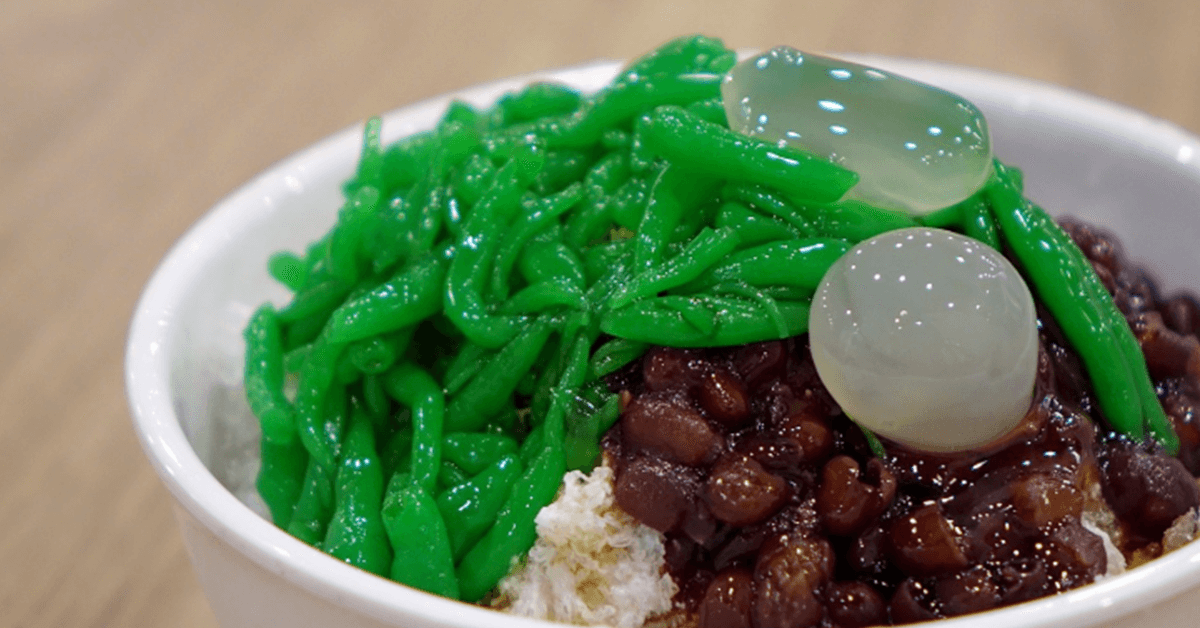

(image credit: needpix.com)
You should always make some free time to make an effort to reach out to your family members. After all filial piety is a value that we want to pass on to our children every generation.
As Malaysians, one of our main points of pride is our multi-cultural diversity. Indian, Chinese or Malay, we have come together as a nation in how much we enjoy sharing our food with each other.
And besides, everyone loves to bond over desserts especially. When the rush of meal preparation has died down and hunger has been satisfied. Everyone can begin to relax and pursue idle chatter around a platter of baked goods.
And this is where you come in! Bring your family together by impressing them with the power of sweets and nostalgia.
So what are some traditional Malaysian desserts that you could try your hand at?
1. Kuih Seri Muka Pandan


(image credit: rasamalaysia.com)
This is a famous blayered kuih. It’s hard to find a concrete source as to which ethnic group the recipe originated from, so it may have either Malay or Peranakan roots. However, considering that it is such a widely loved dessert you can be sure that everyone will love this kuih regardless!
Kuih Seri Muka Pandan is made with glutinous rice for the bottom layer and pandan custard for the upper layer. The two savoury and sweet halves balance each other out nicely but don’t be surprised if young children start peeling them apart to enjoy the pandan custard on its own!
As this is a steamed dessert, you don’t need an oven for this recipe but just remember to check in on it as it is steaming once or twice. This is to make sure that you still have enough water for steaming and won’t burn anything.
2. Almond Cookies


(image credit: rasamalaysia.com)
Chinese Almond Cookies are extremely crumbly in texture, so you will have to take care to always have a plate or bowl to catch any extra crumbs as you eat it. It’s well worth the mess though, for how good it tastes.
These almond cookies have an off-white colouring speckled with almond flakes. There’s nothing fancy about how it looks and it’s far too fragile for anything but basic shaping before it is baked. However, there is a definite classical to them that can’t be denied.
There are sure to be many Chinese people who have fond memories of snacking on this treat during Chinese New Year as well!
3. NanKhatai Biscuits


(image credit: vegrecipesofindia.com)
Also known as Suji Biscuits, this recipe has been claimed and adapted by multiple ethnic groups. Malay, Chinese and Indians each having their own version on this recipe to serve at their respective celebrations.
NanKhatai Biscuits are described as a melt-in-your-mouth biscuit that is both sweet and salty that Malaysians love. It only requires fairly simple ingredients with the exception of ghee, also known as clarified butter. After you’ve gotten over that hurdle, you just have to toss in some spices like nutmeg and cardamom for flavour.
Even though the batter comes to a bread dough-like consistency, you don’t need to knead it like you would pastry. Like normal cookie dough, just make sure that all the ingredients are well incorporated before you bake them.
Because of their fragile nature, they crack in the oven as they are being baked. So don’t need to worry, they’re meant to do that!
4. Kuih Batik


(image credit: aliff.co)
Inspired by the tiffin dessert of British origin, this Malaysian adaptation uses ingredients that are more familiar to us. This changes the flavour to be more homey as it uses our local Milo powder!
It also uses Marie biscuits in the recipe, so do not be disappointed if you’ve realised that you don’t have all the ingredients to make Kuih Batik. You can’t always be expected to have a fully stocked pantry. Marie biscuits are great for dunking in drinks, so you can hold off your cravings until you get around to having all your ingredients in one place.
Because it is a sweet chocolate dessert, children especially love this recipe. It is even served in some school canteens where kids can treat themselves if they have enough pocket money.
5. Chinese Egg Tarts


(image credit:commons.wilipedia.org)
Available at almost any dim sum restaurant, Chinese Egg Tarts differs from its cousins the Portugese Egg Tart and Hong Kong Egg Tart in minor but key differences that make it so beloved in the Malaysian-Chinese Community.
The crust of Chinese Egg Tarts are thin and flaky while its egg custard center is a gentle kind of sweetness because of the sweetened condensed milk.
As it is less oily and less sweet than the other two egg tarts, many Malaysians like to eat this as a breakfast treat but still love to have it at any time of day.
6. Apam Balik


(image credit: Vijenthi Nair [the star online])
Apam Balik is a thin pancake made with typical pancake ingredients such as flour, eggs and sugar. It also uses coconut milk which is part of what makes it different to a normal pancake.
As its name translates to “turnover pancake”, it helps describe how the filings are spread over the pancake while it cooks and then it is “turned over” so that it folds on itself.
The fillings are completely up to your imagination!
You can use traditional pancake toppings like bananas and chocolate, or go a savoury route with meats and cheese! However, if you want an authentic Apam Balik flavour use cream corn and ground peanuts
7. Kuih Bengka


(image credit: huangstation.com)
WIth its English name being “Tapioca/Cassava Cake”, it’s not a tough guess at what the main ingredient is.
This is a Peranakan dessert that originated from even before there was electricity!
It’s fragrant, tender and chewy to an almost elastic degree. Typically flavoured with pandan leaves and coconut milk, these kampung tastes are sure to be a big hit with the older generation.
Remember to use only fresh pandan leaves for the best results!


(image credit: Same [flickr.com])
As you can see, there are so many different and fascinating traditional Malaysian desserts that it is a wonder that we are currently more taken up with recipes from overseas. But let’s do our part, together, to keep our history and culture live and well by sharing and appreciating these dishes with our friends and family.
We might even have some of these recipes as part of our available baking courses!
Come and check out if we have anything that may catch your eye.
https://www.myweekendplan.com.my/

Comment (0)